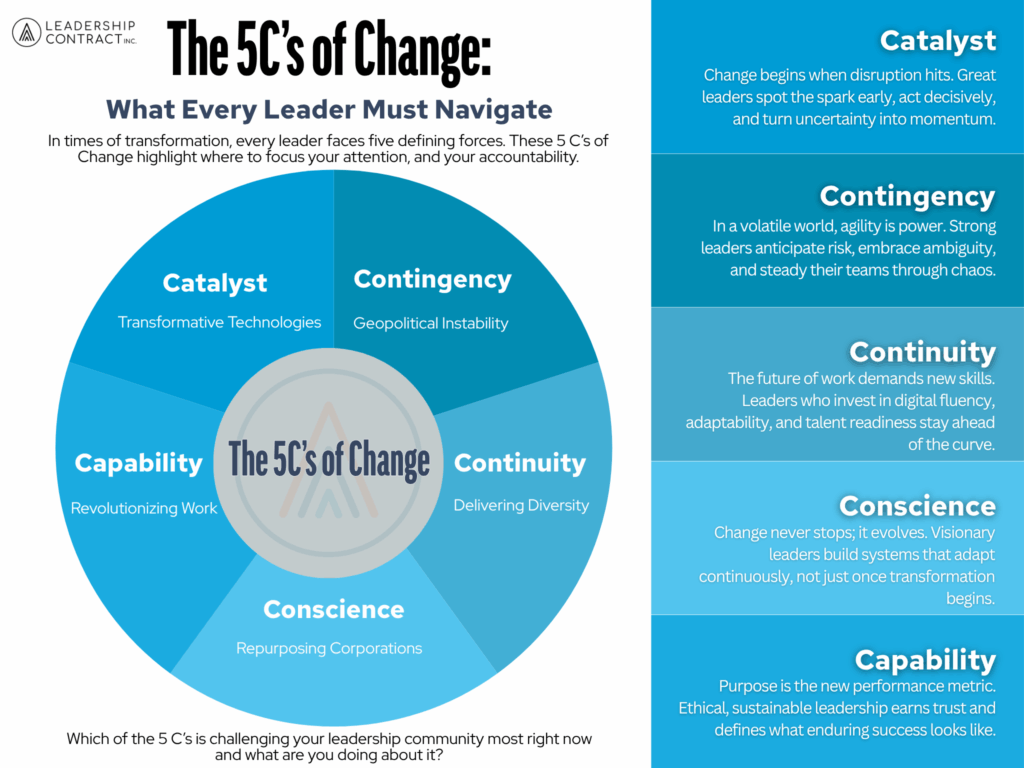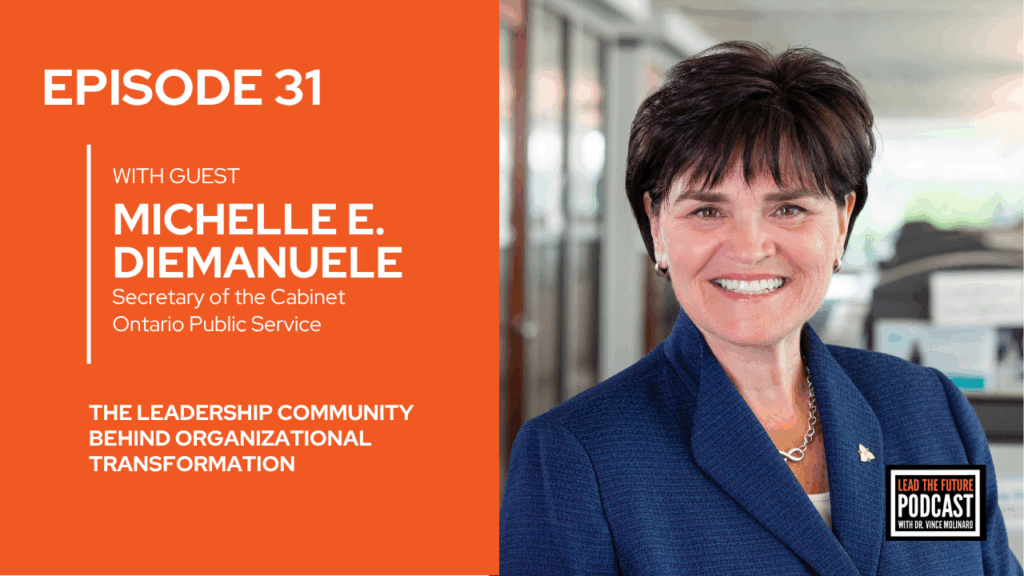When disruption becomes the norm, leadership isn’t just about managing teams but leading through change.
Today’s organizations aren’t just undergoing change—they’re being redefined by it. As complexity and speed increase, the burden on leaders is growing.
But as Michelle DiEmanuele, Secretary of the Cabinet and Head of the Ontario Public Service (OPS), reminds us, sustainable progress doesn’t come from more control; it comes from building a community, rooted in truly accountable leaders and a shared purpose
In our recent Lead the Future podcast conversation, Michelle offered a powerful lens on what it really takes to lead large-scale transformation.
Her insights are a gut check for any senior executive: Are you just leading a team, or are you cultivating a system of leadership that can carry and sustain real change?
Start With Belief, Not Just Strategy
For Michelle, change management leadership begins with something deeper than a plan or roadmap: belief. “If you can’t describe why or how things will be better by changing,” she says, “it’s almost impossible to be successful.”
Transformation must be anchored in a compelling “why”, a future that people believe in and want to create. That belief is what unlocks trust and powers commitment through ambiguity.
Today’s Change Isn’t Linear—It’s Whitewater
Business transformation used to follow a predictable cadence. Not anymore.
Michelle compares leading change today to whitewater rafting {non-linear, fast-moving, and filled with unexpected obstacles}. Success doesn’t come from rigid plans, but from agility, resilience, and teamwork.
“You’re going to hit bumps. You need the right people in the boat with you and the right tools to pull people back in when they are at risk of falling out.”
Walk the Change. Feel the Change. Lead the Change.
Dashboards don’t tell the full story. Great leaders use all their senses: walking the halls, listening to the mood, and watching how people react in real time. “Only then,” Michelle says, “can you see around corners and adjust before the risk becomes reality.”
Being present during change isn’t a soft skill—it’s a strategic one.
Real Change Happens When You Redesign Process, Not Just Structures
Too many leaders declare victory after a restructure.
But Michelle is clear: “Changing org charts is the easiest form of change. The real work (and the lasting impact) comes from changing core processes.”
That’s the kind of change that sticks. It may not be flashy, but it’s where real transformation takes root.
One Team, One Mission: Building a Leadership Community
One of the most significant shifts Michelle has led within the Ontario Public Service is the move from siloed leadership toward a true community of accountable leaders.
In today’s complex environment, where cross-functional collaboration is essential, building that sense of unity isn’t a nice-to-have it’s mission-critical.
Re-establishing a shared purpose—anchored in public service—was the first step. But belief alone wasn’t enough. Michelle recognized the need to put structure and discipline behind the idea of community, including a way to track its strength over time.
“We had measured culture,” she shared, “but we hadn’t measured leadership community.”
That shift in mindset sparked a new approach: measuring how leaders were showing up for one another. Not just their individual performance, but their collective effectiveness.
They focused on key indicators like accountability, critical conversations, service orientation, and clarity of mission. The results were clear: scores in those areas rose by 8 to 20 percent across the organization.
The takeaway? Great leadership doesn’t happen in isolation; it happens by design. And when you start treating it that way, with rigor and intentionality, the culture changes from coordination to cohesion. From cooperation to true community.

Excellence Is Not Optional
Michelle closed with urgency: “We’re at an inflection point. And every day we fail to improve, we fall behind.”
Excellence isn’t a vanity metric. It’s a national imperative, and it doesn’t come from individual heroics. It comes from leaders who pull together, push forward, and build systems that outlast them.
FAQs for Leaders Navigating Change
How can I be a successful change leader?
To be a successful change leader, combine strategic clarity, emotional strength, and accountable leadership. Inspire belief, build trust, and lead with empathy to create a leadership community that stays resilient and united through change.
What does it mean to lead with purpose?
To lead with purpose means aligning every decision and action with a clear “why.” It’s about inspiring others through vision, values, and impact, not just results.
How do you develop a community of leaders?
To build a community of leaders, start by making leadership intentional. Build trust, break down silos, and demand accountability across every level. Align around a shared purpose, embed those habits into daily practice, and grow together as one connected, unstoppable team.
How can leaders turn disruption into opportunity?
By embracing curiosity, collaboration, and resilience. Great leaders don’t fear disruption, they use it to unite their community, challenge old thinking, and create lasting transformation.
Before you move on to your next meeting or strategic plan, take a gut check. Are you truly leading through change, or just managing it?
Start building a leadership community today. One that thrives on belief, accountability, and purpose. Because real transformation begins when leaders lead together.
Follow Secretary of the Cabinet, Michelle E. DiEmanuele on LinkedIn.







